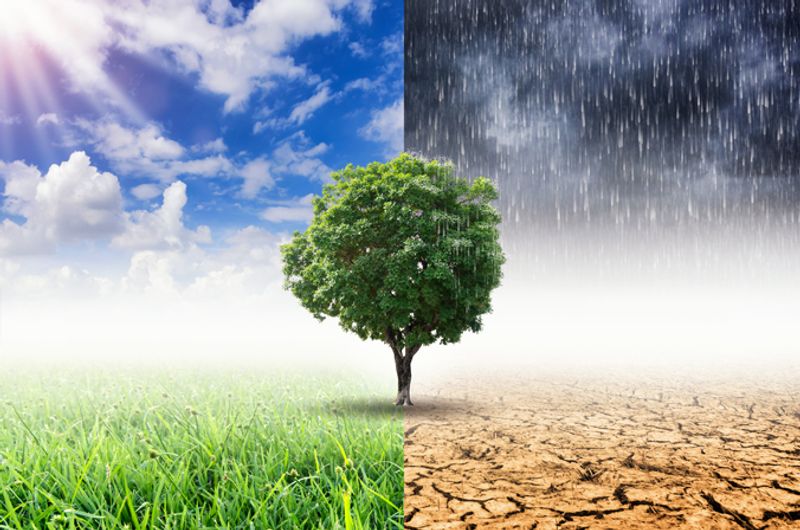Climate change linked with increases in autoimmune diseases
Key takeaways:
- Pollution breaks down epithelial barriers to penetrate the body, triggering inflammatory responses.
- Increases in exposure to particulate matter increase risks for developing disease.
The effects of climate change break down epithelial barriers, enabling pollutants and other materials to penetrate the body and trigger or exacerbate autoimmune diseases, according to a review published in Frontiers in Science.
“Epithelial cells line all of these parts of the body,” Mary Margaret Johnson, MD, PhD, principal research scientist at Harvard T.H. Chan School of Public Health and author on this paper, told Healio. “They’re in your airway, in your gut and in your skin.”

These barriers are the body’s first line of defense, the authors of the study wrote, as immune cells in the epithelial layer determine the severity of the threat that foreign invaders present and respond to them.

However, the authors continued, exposure to pollution and other toxic substances in the air, in water and in food can damage the epithelial barrier by disrupting the tight junctions between epithelial cells.
“There’s like a leakiness that can now go into different parts of the body and cause these inflammatory reactions, whereas if those tight junctions functioned correctly and weren’t insulted, you’d still have that nice seal,” Johnson said.
Once inside the body, these substances can trigger inflammatory responses, including asthma, allergy and autoimmune diseases such as rheumatoid arthritis, systemic lupus erythematosus, inflammatory bowel diseases, type 1 diabetes and multiple sclerosis.
Although the overall global prevalence of autoimmune diseases is approximately 3% to 5%, the authors wrote, incidence and prevalence vary with age, gender and ethnicity, with evidence indicating a growing burden of disease linked to pollution.
The authors cited an incremental 7% risk for developing an autoimmune disease with each 10 µg/m3 increase in particulate matter that measures 10 µm or less in diameter (PM10).
Also, PM10 exposures measuring more than 30 µg/m3 were associated with a 12% increase in risk for developing an autoimmune disease.
Exposures of more than 20 µg/m3 to particulate matter measuring 2.5 µm or less in diameter (PM2.5) similarly were associated with a 13% increase in risk for developing an autoimmune disease.
The authors also noted a link between fine particulate matter and systemic autoimmune rheumatic diseases (SARDS) with an adjusted hazard ratio of 1.12 (95% CI, 1.08-1.15) for developing SARDS with each interquartile range increase of 3.97 µg/m3 in PM2.5.
Although particulate matter from wildfires, diesel exhaust and other sources can be dangerous on its own, Johnson said, heavy metals, ozone, bacteria and viruses can “hijack” and become part of particulate matter, adding to epithelial barrier damage and immune system dysregulation.
Water and soil pollution are threats too, Johnson said, with climate change exacerbating shortages in food and water. Chemical pollutants such as emulsifiers, coloring agents and preservatives in foods can disrupt epithelial barriers as well, the authors wrote.
Johnson advised people to eat more fresh foods and fewer processed foods while reading the labels of whatever foods they do eat.
“That is definitely a strategy that I am personally trying to employ with myself and my family in an attempt to avoid some of this chronic inflammation that is going on in our bodies,” she said.
Additionally, dietary factors are important in the development of autoimmune diseases, the authors wrote, making food security, access to healthy foods, and diverse food choices all vital in preventing these illnesses.
“In the ocean, if there are tons of microplastics and you’re eating fish, that’s a problem,” she said.
The effects of these substances on the body are cumulative as well, Johnson said, but clinicians can educate their patients to minimize exposures to these toxins and mitigate their effects on autoimmune diseases.
“People need to be aware of what their air quality is,” she said, advising that patients can go online to see what their local situation may be like before venturing outside.
Johnson also recommended that patients replace windows to prevent air pollution from getting indoors, using air purifiers and replacing gas appliances, which she called another source of pollution.
“But it’s based on what people are able to afford,” she said, adding that people with lower incomes do not produce as much pollution as those with higher incomes. “There’s disparity between who’s causing the pollution and who’s actually being exposed to the majority of it.”
Changes such as tighter regulations also are needed at the policy level, Johnson continued, noting that legislation such as the Clean Air Act has been successful.
“Is that going to be enough to curb climate change?” she asked. “It has to be a global solution.”
The authors recommended policies to improve air quality by reducing the use of fossil fuels, provide safe housing with improved weatherization, and increase the quality and diversity of diets and agricultural practices.
Also, the authors recommended increasing environmental diversity and green spaces, as well as collaborative, multidisciplinary research to better understand the pathophysiology of immune diseases in relation to climate change.
Considering the greater impact that climate change has on vulnerable populations, including children, the elderly and those of low socioeconomic status, the authors said these efforts should consider justice, equity, diversity and inclusion as well.
Along with educating patients, Johnson said, physicians can be advocates for these policies and demonstrate how changes in climate impact health.
“They’re the best ways that that can use their skills,” Johnson said.
For more information:
Mary Margaret Johnson, MD, PhD, can be reached at mjohnson@hsph.harvard.edu.

